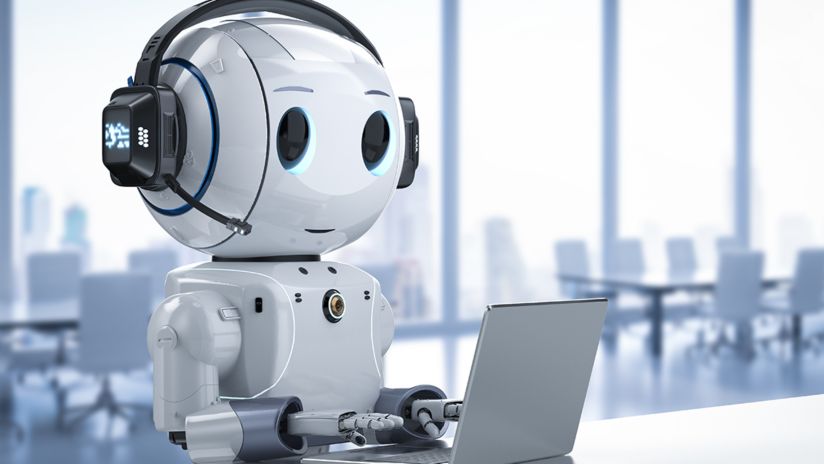Three Ways Chatbots Improve Customer Experience

Highlights
- Reduce customer frustration
- Engage and manage complex customer conversations
- Shape better customer journeys
Chatbots are often the first step in achieving the significant value of artificial intelligence (AI) and machine learning—in terms of productivity, convenience, and customer engagement.
In a global survey of nearly 600 executives across 18 countries, MIT Technology Review Insights reports that nine out of 10 already use AI solutions to improve the customer experience. AI and machine learning technologies create consistently better customer and agent experiences, and they reduce unnecessary costs.
Consumers are ready and willing to engage with AI if it improves their experiences. Chatbots can assist your contact centre agents when they’re overwhelmed by increased contact volumes and enable you to increase self-service for simple tasks while improving customer and employee satisfaction — and achieving better business outcomes. On-demand and self-service are the new norms for the majority of customer interactions because customers expect instant service online that’s available 24/7. This shift in customer preferences and engagement extends the role of AI and automation in contact centres — and it’s driving the growth of chatbots.
However, not all third-party AI systems and bots unify interactions across all channels — this can provide customers with a disconnected experience. However, by using bots that are part of an open omnichannel framework that integrates with third-party AI solutions, you can create unity, and offer new opportunities to engage with customers and improve their experiences.
Chatbots improve business outcomes through:
- First-contact resolution (FCR) – Bots identify customers and context to present the next-best step
- Employee utilisation – Bots remove repetitive tasks so your agents can focus on more complex issues
- Customer experience – Bots offer immediate options and handle requests even in off-hours
So how do chatbots improve customer experience?
1. Reduce customer frustration
If customers can’t find what they want on your website, they’ll go elsewhere. Since 2010, buyer journey abandonment has gotten worse across all industries. And the current abandon rate is nearly 70%. – a bot can help point customers in the right direction and answer simple questions.
Having to repeat themselves is another major customer frustration. Answering the same question multiple times degrades the customer experience. So, it’s important that data from your automated systems is available to live agents.
Automated systems are good for many tasks, but once a customer reaches an agent, they expect more. Yet, it’s hard for any one agent to be well-trained on every aspect of customer service or every product you offer. Customer insights realised through machine learning can help. This knowledge lets your agents deliver the best service to the customer, faster.
Good bots offer essential support for agents on these complex interactions. They display information upfront about what the customer wants. Plus, historical data informs agents on how to take action. And they can follow up with recommended tips, articles and insights.
2. Engage and manage complex customer conversations
AI opens up opportunities with a new type of customer experience that goes far beyond informational search capabilities or automated IVR. It enables a conversational experience in which your business proactively engages with customers and guides their journey.
Instead of requiring that customers navigate to their answer, that conversational element—whether in chat or by voice—lets you ask how you can help them. Conversations give you context that enables you to offer more options than simply answering a query.
For example, your customer books a hotel room for a trip to Sydney next month. This customer also wants to purchase theatre tickets for a show at the Opera House. Using AI-powered chatbots, you can present other value-added options, such as “If you wait two weeks you can attend that show—or sit closer and pay less.” This conversation could also extend to making pre-show dinner reservations.
Limited IVR in the real world
In traditional IVRs, customers select one option at a time, and the IVR can process only that one intent. But people don’t generally think in a linear fashion—they multitask.
Suppose you dial into an IVR to change your address and open a new savings account. Then you remember that you need to add someone to your existing account. With a standard system, you’d complete one task and then go back to the beginning to complete the second. And then you’d go back once more for the final task.
Most agents aren’t trained to manage follow-up intents. If the task falls outside of their set department, the agent lacks the tools or knowledge to help. When this happens, they often don’t deal with, record, or track the secondary intent—then your business loses valuable interaction data.
Voicebots identify multiple intents upfront. They can handle them within the IVR and, if needed, pass them on to an agent. A conversational IVR captures context and improves the customer experience through personalisation. This is made possible by using Natural Language Understanding (NLU) within your current IVR.
According to a Capgemini survey, 76% of businesses have realised measurable benefits from voice and chat assistants, including an increase in Net Promoter Score (NPS), customer wait time reduction of more than five minutes, and over 20% increase in First Call Resolution (FCR).
3. Shape better customer journeys
Chatbots use AI technology to shape customer journeys and can significantly improve customer interactions in the contact centre.
Imagine that a customer starts a chat with an online retailer about a product return. The chatbot proactively asks if the customer is chatting about a particular purchase. For online retailers, there’s a very high likelihood that this interaction is about a recent delivery. In other words, the customer journey continues with all the context of previous interactions. With a simple “Yes” reply, the chatbot understands the intent, fills the gaps with the details of what the customer needs, and fulfills this return.
The ability to identify intent is very important because the return could be the end of the interaction. But the chatbot can proactively offer a connection to an agent for advice on a replacement item, for example. This way, bots become a resource for generating profit, and they understand when a human agent should step in with a personal touch.
You’ll get more from your bots when they seamlessly collaborate with human agents.
Wrapping up on AI-powered bots and customer experiences
Bots play an essential role in the customer engagement process. They triage the conversation throughout the customer journey. With them, you can determine the best way to engage with prospects and customers. And you’ll know which channels your customers prefer—and how long users will wait for an agent.
If there’s a question the bot can’t answer—or if the user requests a human agent—the bot redirects the interaction. And agents receive complete context of the conversation so far.
Is it time to put AI to work in your contact centre?
- According to Gartner, by 2022, 72% of interactions will involve chatbots.
- There was a 250% jump in the number of organisations using AI, from 4% in 2018 to 14% in 2019.
- There is a 61% increase in customer satisfaction from a blend of human agents and AI-enabled chatbots.
- Human agents are 66% more productive when AI handles some tasks.


